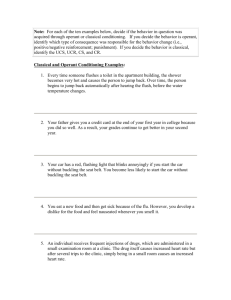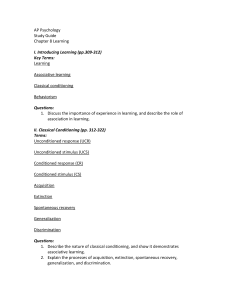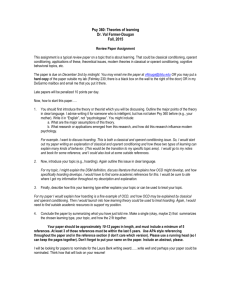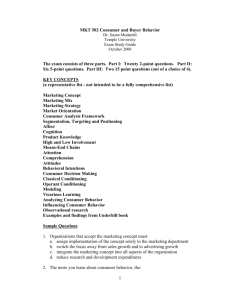learning.assign202-12 - King's Psychology Network
advertisement
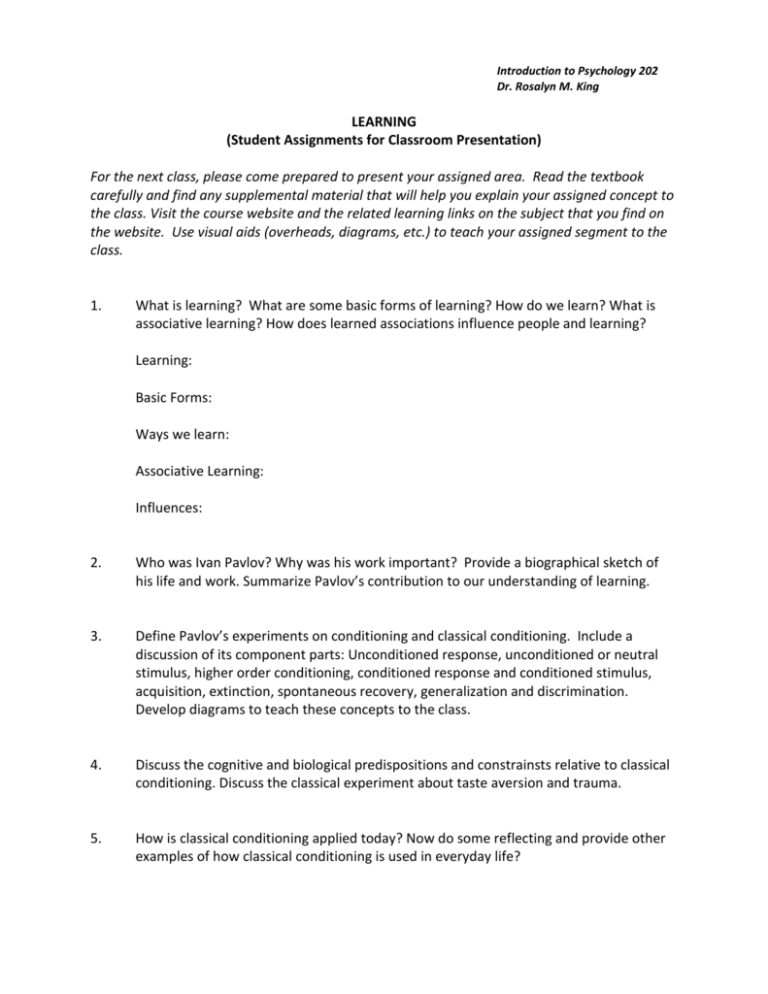
Introduction to Psychology 202 Dr. Rosalyn M. King LEARNING (Student Assignments for Classroom Presentation) For the next class, please come prepared to present your assigned area. Read the textbook carefully and find any supplemental material that will help you explain your assigned concept to the class. Visit the course website and the related learning links on the subject that you find on the website. Use visual aids (overheads, diagrams, etc.) to teach your assigned segment to the class. 1. What is learning? What are some basic forms of learning? How do we learn? What is associative learning? How does learned associations influence people and learning? Learning: Basic Forms: Ways we learn: Associative Learning: Influences: 2. Who was Ivan Pavlov? Why was his work important? Provide a biographical sketch of his life and work. Summarize Pavlov’s contribution to our understanding of learning. 3. Define Pavlov’s experiments on conditioning and classical conditioning. Include a discussion of its component parts: Unconditioned response, unconditioned or neutral stimulus, higher order conditioning, conditioned response and conditioned stimulus, acquisition, extinction, spontaneous recovery, generalization and discrimination. Develop diagrams to teach these concepts to the class. 4. Discuss the cognitive and biological predispositions and constrainsts relative to classical conditioning. Discuss the classical experiment about taste aversion and trauma. 5. How is classical conditioning applied today? Now do some reflecting and provide other examples of how classical conditioning is used in everyday life? Page 2) Psy 202 - Learning 6. Who was B.F. Skinner. Provide an overview of his life and work. Summarize Skinner’s contributions to our understanding of learning. How is his perspective different from that of Pavlov? 7. Define operant conditioning and operant behavior. What is an operant chamber? Include a discussion of respondent and operant behavior, the law of effect and the concept of shaping and chaining. 8. What is reinforcement? What are the types of reinforcers? What are the principles and schedules of reinforcement? How can each schedule of reinforcement be used in the real world? Provide examples. 9. What is punishment? What are the problems with punishment–how does it affect behavior? What are the conditions that must be met for punishment to be effective? 10. What are the cognitive and biological predispositions and constraints relative to operant conditioning? Include a discussion of latent learning, creating cognitive maps, intrinsic/extrinsic motivation and their influences on learning. 11. What are the applications of operant conditioning? Can you think of other examples of how operant conditioning is used in everyday life–at school, in sports and other activities, at work and at home? 12. Provide your overall understanding and distinctions between classical and operant conditioning. How do cognitive processes affect classical and operant conditioning 13. Describe Observational Learning, its components. How is observational learning enabled by mirror neurons. Provide real life examples of how we learn from observation? 14. Who is Albert Bandura? Provide a biographical sketch of his life and work. Describe his psychological experiments on observational learning and the Bobo dolls. 15. What is the impact of prosocial modeling and anti-social modeling? 16. Describe the applications of observational learning– provide examples of positive & negative learning and models, influences of the media and other examples from real life. rmk:8-12




